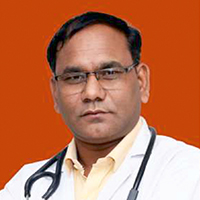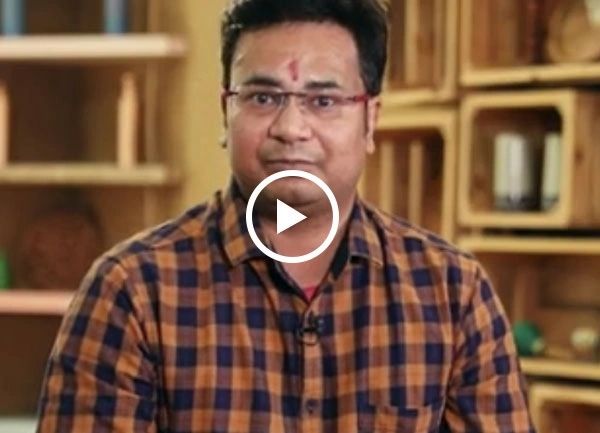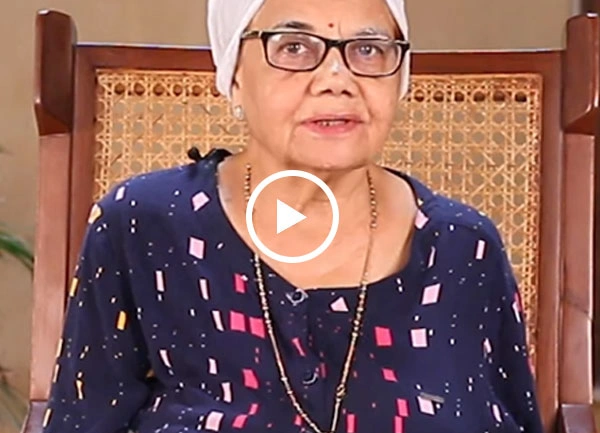

Successful Treatments
Clinics
Doctors
What is Heat Stroke?
A heat stroke, also known as sun stroke, is a condition that is caused by body overheating, which happens due to exposure to high temperatures or physical activity in high temperatures for too long. There are a few stages of heat related conditions, of which heat stroke is the most serious and can happen if body temperature rises to 104 degrees Fahrenheit or higher, and is most common during the summer season.
This condition, if not treated, can quickly damage the brain, heart, kidneys and muscles. The damage gets worse the longer treatment is delayed, which increases risk of serious complications of death.
There are two types of heat stroke – non-exertional heat stroke and exertional heat stroke.
When a heat stroke happens due to being in a hot environment, it is known as non-exertional/classic heat stroke, and it causes a rise in core body temperature. It happens after exposure to hot, humid weather for a long period of time and happens most often in older adults and people with ongoing health conditions.
Exertional heat stroke is caused by an increase in core body temperature, which is brought on by intense physical activity in hot weather conditions. Anyone exercising or working in hot weather can get this condition, but it is most likely to occur if you are not used to high temperatures.
Heat Stroke Causes
Wearing heavy and/or synthetic clothing can prevent sweat from evaporating and cooling the body, which can cause core body temperature to rise
Consumption of alcohol, which can affect the body’s ability to regulate temperature
Dehydration brought on by not drinking enough water, leading to loss of fluids through sweating
Symptoms
High body temperature
A core body temperature of 104 degrees Fahrenheit or higher is the main symptom
Change in mental State
Change in mental state or behaviour, such as confusion, agitation, slurred speech, irritability, delirium, seizures and coma
A change in the pattern of sweating
In non-exertional heat stroke, skin may feel hot and dry to the touch, and in exertional heat stroke, one may start sweating more profusely
Nausea and Vomiting
during heat stroke, one may feel sick to the stomach or vomit
Flushed skin
as body temperature increases, skin may turn red
Rapid Breathing
due to the body heating up, breathing becomes rapid and shallow
Racing heart rate
due to heat stress, extreme burden is put on the heart to help cool the body, which results in a significant increase in pulse rate
Headache
the head may start to throb due to heat stroke
Heat Stroke First Aid
If someone gets heat stroke, immediate action is required to help cool that person down.
Shift the person into a shaded area or take them indoors
Excess clothing should be removed to help in evaporation of sweat
The person should be placed in a cool tub of water or cool shower, sprayed with garden hose, sponge with cool water, fan while misting with cool water or place ice packs or cold, wet towels on person’s head, neck, armpits and groin
Ice should not be used to older patients, young children, patients with chronic illness, or anyone whose heat stroke is non-exertional
How To Prevent Heat Stroke
To avoid heat stroke, the following precautions can be taken during hot weather conditions:
Wear loose-fitting and light weight clothes
Use sunscreen to protect yourself against sunburn
Consume plenty of fluids to keep yourself hydrated
Take extra precautions with certain medications that can hamper your body’s ability to stay hydrated and cool down
Avoid beverages containing caffeine or alcohol, as both of these work as diuretics and lead to more loss of fluids
Heat Stroke Treatment in Ayurveda
Ayurvedic treatment of heat stroke is not limited to alleviating the symptoms but is focused on thorough treatment of the disease.
Herbal Remedies
Ayurvedic herbs like Amla, Guduchi and Shatavari are known for their cooling properties and can help in both preventing and managing heat stroke.
Dietary Adjustments
Following a Pitta-pacifying diet that includes cooling foods such as cucumbers, melons and leafy greens can help to regulate body temperature and prevent heat stroke.
Panchakarma Therapies
Takradhara (continuous pouring of medicated buttermilk on forehead) and Chandanadi Abhyang (full-body massage with sandalwood oil) helps to cool the body, calm the mind and balance Pitta dosha, which is vitiated during heat stroke.
Meditation & Yoga
Asanas and Pranayama that can balance Pitta dosha as well as relax and cool down the body are great for managing heat stroke, and can also prevent it.
Jiva’s Evidence-Based Treatment Process
Nadi Pariksha
Starting with Nadi Pariksha, Jiva’s certified Ayurvedic doctors use this traditional pulse diagnosis to detect imbalances and assess organ health, which is crucial for diagnosing Heat Stroke accurately.
Prakriti Analysis
Understanding your unique physical and psychological pattern allows us to create a Heat Stroke treatment plan that not only addresses symptoms but aligns with your inherent constitution for lasting health.
Samprapti Ghatak (Pathogenesis)
Our practitioners investigate the progression of heat stroke by examining hygiene, dietary habits, lifestyle and mental health factors. This thorough analysis helps identify specific triggers that need to be addressed for targeted and individualised treatment.
Chikitsa Sutra - Personalised Treatment Plan
We then create a detailed Heat Stroke treatment plan, which consists of diet modifications, lifestyle adjustments, herbal medications, and specific therapies that aim to restore dosha balance and enhance overall health.
Continuous Monitoring & Amendments
Continuous tracking of the effectiveness of the treatment allows us to make necessary adjustments, ensuring that you achieve the best results from your personalised and Ayurvedic Treatment for Heat Stroke with Jiva’s ongoing support.
What Our Patients Say
87% of patients rate us excellent in service.
78% of patients saw significant improvement in 3 months of treatment.
92% of patients stopped allopathic medicines completely.
FAQs
Many factors can make a person more vulnerable to getting heat stroke, such as:
Age: very young children and people over the age of 65 are more at risk due to the ability to cope with extreme heat. Very young children’s central nervous system is not fully developed and in adults over 65, central nervous system becomes less responsive
Exertion in hot weather conditions: participating in sports, military training, or doing strenuous physical work outdoors can lead to heat stroke
Sudden exposure to hot weather: heat waves or travelling to a destination with hotter climate, can also lead to heat stroke
Certain medications: some medicines hamper the body’s ability to remain hydrated and respond to heat. If you take medications that narrow blood vessels (vasoconstrictors), regulate blood pressure by blocking adrenaline (beta blockers), rid body of sodium and water (diuretics), or reduce psychiatric symptoms (anti-depressants or anti-psychotics) can put you at a higher risk of getting heat stroke
Certain chronic illnesses: certain health conditions such as heart or lung diseases, or being overweight, inactive and having history of heat stroke can increase your risk
If treatment for a heat stroke is delayed, it can result in a number of complications, which depends on how long the body temperature is high. If body temperature is not lowered as quickly as possible, it can cause brain or other vital organs to swell, which can result in permanent damage. It can also be fatal.
It is a heat-related illness that occurs when the body cannot cool itself effectively. It can progress to heat stroke if left untreated.
Home remedies are not enough for treating heat stroke. If you develop any of the symptoms of heat stroke, emergency medical help should be sought. People around you should administer first aid by trying to cool off your body while waiting for emergency help.
Heat index is the measurement of how hot one feels when effects of relative humidity and air temperature are combined. Relative humidity of 60% and higher can affect sweat evaporation, which affects the body’s ability to cool itself.
Top Ayurveda Doctors
Our Happy Patients
Blogs
Home Remedies
- मसूड़ों की सूजन और दर्द का आयुर्वेदिक इलाज - घरेलू नुस्खे और मुफ़्त परामर्श
- डेंगू से कमजोरी? आज़माएं ये आयुर्वेदिक घरेलू नुस्खे और पाएं मुफ़्त परामर्श
- क्या कोरोना के लक्षण महसूस हो रहे हैं? ये आयुर्वेदिक नुस्खे देंगे राहत
- नाक बंद और भारी सिरदर्द? आज़माएं ये घरेलू नुस्खे, असर तुरंत
- स्ट्रेस, थकान या माइग्रेन? ये आयुर्वेदिक नुस्खे देंगे सिरदर्द से छुटकारा
- दाँत में झनझनाहट या कैविटी का दर्द? ये आयुर्वेदिक नुस्खे देंगे राहत
- Home Remedies for Headache
- Home Remedies for Sensitive Teeth
- Home Remedies for Tooth Cavity
- Home Remedies for Dengue
- Home Remedies for Corona
- Home Remedies for Cold
- Home Remedies for Burning Feet
- Home remedies for Migraines
- Home Remedies For Fever
Related Disease
- Ayurvedic Treatment for Obesity
- Ayurvedic Treatment for Migraine
- Ayurvedic Treatment for Heat Stroke
- Ayurvedic Treatment for Paralysis
- Ayurvedic Treatment for Mastitis
- Ayurvedic Treatment for Gangrene Foot
- Ayurvedic Treatment for Granuloma
- Ayurvedic Treatment for Amyloidosis
- Ayurvedic Treatment for Thrombocytopenia
- Ayurvedic Treatment for Dengue
- Ayurvedic Treatment for Measles
- Ayurvedic Treatment for Fistula in Ano
- Ayurvedic Treatment for Malaria
- Ayurvedic Treatment for Plantar Fasciitis
- Ayurvedic Treatment for Chikungunya
- Ayurvedic Treatment for Sepsis
- Ayurvedic Treatment for Addison's Disease
- Ayurvedic Treatment for Eye Floaters
- Ayurvedic Treatment for Eye Flu
- Ayurvedic Treatment for Herpes
- Ayurvedic Treatment For Teeth Cavities
- Ayurvedic Treatment for Tooth Pain
- Get Ayurvedic Treatment for Vertigo
- Get Ayurvedic Treatment for Thrombosis
- Ayurvedic Treatment for Corona
- Ayurvedic Treatment for Ascites
Latest Blogs
- क्या बार-बार एंटीहिस्टामिन लेने पर भी Hives वापस आ जाते हैं?आयुर्वेद में इसके मूल कारण जानें
- क्या परफ्यूम, साबुन या धूल के संपर्क में आते ही फौरन दाने उभर जाते हैं? Urticaria में ट्रिगर्स आयुर्वेदिक दृष्टि से समझें
- क्या रात के समय खुजली और दाने अधिक बढ़ जाना Urticaria की प्रकृति दिखाता है?आयुर्वेदिक दृष्टिकोण देखें
- क्या तनाव या घबराहट बढ़ते ही Hives flare-up शुरू हो जाता है? मन-पित्त संबंध आयुर्वेद की नज़र से समझें
- क्या अचानक चेहरे, होंठ या आँखों के आसपास सूजन आना Angioedema या Urticaria का लक्षण है? – आयुर्वेदिक व्याख्या
- क्या Delivery के बाद महिलाओं में Fissure ज़्यादा देखा जाता है? आयुर्वेद बताता है कारण और देखभाल
- क्या गुदा के आसपास खिंचाव, जलन और सूजन महसूस होना Fissure की प्रगति दर्शाता है?
- क्या मल त्याग के दौरान हल्का खून आना हमेशा Piles नहीं—Fissure भी हो सकता है?
- क्या गुदा के पास हल्की दरार या चमड़ी कटना Fissure का संकेत हो सकता है?
- क्या बार-बार सूखी और कड़ी स्टूल Anal Fissure को और खराब करती है?
- क्या लंबे समय तक कब्ज़ रहने से Fissure बार-बार दोहराता है? आयुर्वेद में इसके कारण जानें
- क्या धूप, ठंड या पानी लगते ही त्वचा पर चकत्ते उभरना Urticaria की ओर इशारा करता है? आयुर्वेदिक संकेत देखें
- क्या कुछ ही मिनटों में दाने फैल जाना Hives का क्लासिक पैटर्न है? आयुर्वेद की नज़र से कारण जानें
- क्या त्वचा पर अचानक उभरने वाले लाल उभरे हुए दाने Urticaria का संकेत हैं? आयुर्वेदिक दृष्टि से समझें
- Struggling With Leg Pain for Years? Ayurveda’s Panchakarma Offers Real Freedom
- From Grief to Healing: How a 75-Year-Old Found Relief from Osteoarthritis and BP Issues in Just 7 Days
- Surgery के बाद कमज़ोरी, Dopamine कम और Immunity गिर गई थी—Ayurveda ने कैसे फिर से ताकत दी
- 85 से 115 KG तक अचानक बढ़ा वज़न—Thyroid, Fatty Liver और Kidney Stone में Ayurveda ने कैसे संभाली हालत
- PCOD Success Story: जब दवाइयाँ काम न करें, Ayurveda दिखाता है असली रास्ता
- लंबे समय तक बैठकर काम करने से बढ़ा Lower Back Pain—10 दिन के Panchakarma ने कैसे दिया आराम
Ayurvedic Doctor In Top Cities
- Ayurvedic Doctors in Bangalore
- Ayurvedic Doctors in Pune
- Ayurvedic Doctors in Delhi
- Ayurvedic Doctors in Hyderabad
- Ayurvedic Doctors in Indore
- Ayurvedic Doctors in Mumbai
- Ayurvedic Doctors in Lucknow
- Ayurvedic Doctors in Kolkata
- Ayurvedic Doctors in Patna
- Ayurvedic Doctors in Vadodara
- Ayurvedic Doctors in Ahmedabad
- Ayurvedic Doctors in Chandigarh
- Ayurvedic Doctors in Gurugaon
- Ayurvedic Doctors in Jaipur
- Ayurvedic Doctors in Kanpur
- Ayurvedic Doctors in Noida
- Ayurvedic Doctors in Ranchi
- Ayurvedic Doctors in Bhopal
- Ayurvedic Doctors in Ludhiana
- Ayurvedic Doctors in Dehradun









































